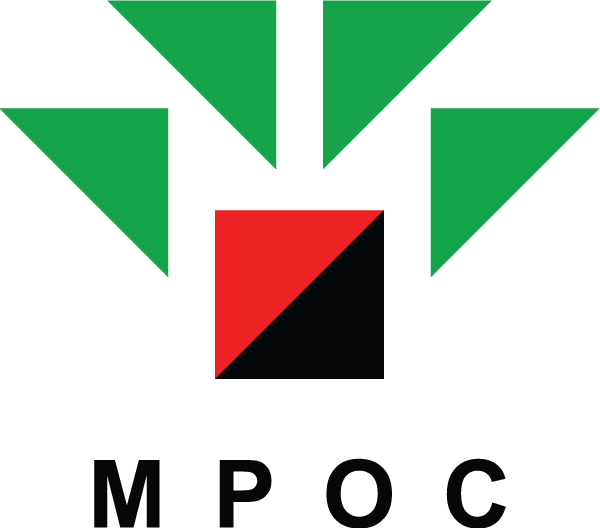
ORGANIZED BY:

Section 2 : Special Focus on the US:
The Development of the Oleochemical Market in the U.S.

Mr. Martin Herrington
Martin Herrington is based in Cincinnati, Ohio, and has been responsible for North American operations for IP Specialities since 2012. IP Specialities is a global trading company with locations in Cincinnati, Hamburg, Singapore and Guangzhou, specializing in glycerine, fatty acids, alcohols and esters.
In over 30 years in the industry, Martin’s roles have included Managing Director of P&G Chemicals, Asia, and Managing Director of FPG Oleochemicals Sdn. Bhd., Associate Director of Logistics Purchases for P&G North America and Western Europe, Martin has lived and worked in London, Osaka, Cincinnati, Singapore and Brussels.
VIEW PROFILE
OVERVIEW
1/ Quick overview of the US oleochemical industry and supply chain.
2/ The impact of 2020
a/ Covid-19 and restrictions
b/ Weather events
3/ Some longer-term trends and concerns
1/ US OLEOCHEMICAL INDUSTRY OVERVIEW
Four primary fatty acid producers:
• Emery Oleochemicals, Cincinnati, Ohio
• PMC Biogenix, Memphis, Tennessee
• Twin Rivers Technologies, Quincy, Massachusetts
• Vantage Oleochemicals, Chicago, Illinois
All are able to use multiple feedstocks, but all use domestic beef tallow as a primary feedstock
TRT and Vantage sell most of their product as fatty acid
Emery and PMC also produce derivatives such as esters.
One primary oleochemical methyl ester / fatty alcohol producer:
• Procter & Gamble, Sacramento, California
Primary feedstocks are coconut and palm kernel oils
P&G supply a portion of their product internally to the consumer product business, and sell a portion externally.
All five oleochemical producers refine their own crude glycerine. (P&G’s refinery is at Cincinnati, not Sacramento).
Bulk imports come in via three main locations:
• Houston, Texas
• New Orleans, Louisiana
• Newark, New Jersey
Primary logistics modes:
• Large loads / long distances: bulk by rail
• Smaller loads / shorter distances: bulk by truck
Two big related industries:
• Two major synthetic (petrochemical) fatty alcohol producers:
o Sasol, Lake Charles, Louisiana.
o Shell, Geismar, Louisiana
• Large biodiesel industry supported by:
o Tax credit $1/gallon ($290/ton approx.)
o Mandate 2.4 billion gallons (7.5 million tons approx.)
2/ IMPACTS OF 2020 ON THE OLEOCHEMICAL INDUSTRY
1/ Transportation slowed down massively beginning March 2020
70% reduction in US truck freight demand
Huge reduction in airline travel
March 1: 22,500 scheduled flights
April 2: 16,600 scheduled flights – and 6,400 cancellations
Effects:
• Huge reduction in fuel demand. Biodiesel production reduced, leading to reduced crude glycerine supply.
• Spike in glycerine prices worldwide in March / April 2020 – they doubled in some markets. US crude glycerine was slow to follow, creating export opportunities for US producers.
• Drop in demands for lubricants – especially aviation lubricants, leading to crash in demand for light cut fatty acids for synthetic lubricants.
2/ Slaughterhouses and meatpacking plants were a major centre of Covid infection
Reduced availability of tallow led to sharp increase in fatty acid prices.
3/ Massive disruption to logistics
Container traffic:
• China shutdown in early 2020 led to containers being “stuck” in places where they weren’t needed.
• Reduced demand drive carriers to pull vessels out of service and institute “blank sailings” – i.e.: vessels not stopping at ports.
• Covid-related restrictions and driver shortages reduced throughput capacity at major ports.
Trucking within the USA
Rates fell during the first half of 2020. Since then, they have surged because of reduced availability due to:
• Shortage of drivers due to Covid
• Diversion of trucks to the Gulf during hurricane emergencies in 2020 and extreme winter weather in early 2021.
4/ Mixed effect of demand changes
• Personal care (soaps, surfactants)– strong demand
• Laundry products (surfactants) – strong due to reduced dry cleaning by people not going to the office.
• Industrial uses (oil field, metal working) very weak in mid-2020
• Transportation (synthetic lubricants etc.) very weak in 2020. This led to sudden and drastic weakening of the light-cut (C-8, C-10) fatty acid market.
5/ Extreme weather conditions
• Major hurricane season in 2020
o Shutdowns and forces majeures across the petrochemical industry, including synthetic fatty alcohol.
o Short-term disruption of logistics.
o Also impacted importers of oleochemicals into the US Gulf.
• Extreme winter in Texas in early 2021
o Loss of power and water in large areas
o Further shutdowns
o Shortage of trucks as they were diverted to Texas.
3/ TRENDS FOR THE FUTURE THAT IMPACT OLEOCHEMICALS
1/ The Weather
• Trend to increased frequency of extreme storms and hurricanes, especially in US Gulf of Mexico area.
• This region houses the majority of the country’s oil refining and petrochemicals infrastructure. Also the largest ports for importation of oleochemicals.
• Risk of continued disruptions to supply.
2/ Environmental Concerns
• New York has announced a limit for 1-4 dioxane in drinking water
• 1-4 dioxane is a small-quantity by-product of production of ether sulphates – the main surfactants made from fatty alcohol.
• Industry is looking for alternative surfactants – this could be a major shift in demand away from fatty alcohols, especially in personal care.
3/ The Fuels Industry
• National biofuels mandate did not distinguish between fuels made from different feedstocks
• California Low Carbon Fuel Standard favours by-prop ducts on the basis of lower carbon footprint of production
• Leading to structural increase in process of tallow, used cooking oil, yellow grease etc.
4/ Palm Oil Industry
• Two major Malaysian palm oil plantation groups are at the moment under Withhold To Release orders, preventing import of products into the USA.
• Unclear how this will play out for palm as a possible alternative for tallow and other domestic oleochemical feedstocks.
1/ Quick overview of the US oleochemical industry and supply chain.
2/ The impact of 2020
a/ Covid-19 and restrictions
b/ Weather events
3/ Some longer-term trends and concerns
1/ US OLEOCHEMICAL INDUSTRY OVERVIEW
Four primary fatty acid producers:
• Emery Oleochemicals, Cincinnati, Ohio
• PMC Biogenix, Memphis, Tennessee
• Twin Rivers Technologies, Quincy, Massachusetts
• Vantage Oleochemicals, Chicago, Illinois
All are able to use multiple feedstocks, but all use domestic beef tallow as a primary feedstock
TRT and Vantage sell most of their product as fatty acid
Emery and PMC also produce derivatives such as esters.
One primary oleochemical methyl ester / fatty alcohol producer:
• Procter & Gamble, Sacramento, California
Primary feedstocks are coconut and palm kernel oils
P&G supply a portion of their product internally to the consumer product business, and sell a portion externally.
All five oleochemical producers refine their own crude glycerine. (P&G’s refinery is at Cincinnati, not Sacramento).
Bulk imports come in via three main locations:
• Houston, Texas
• New Orleans, Louisiana
• Newark, New Jersey
Primary logistics modes:
• Large loads / long distances: bulk by rail
• Smaller loads / shorter distances: bulk by truck
Two big related industries:
• Two major synthetic (petrochemical) fatty alcohol producers:
o Sasol, Lake Charles, Louisiana.
o Shell, Geismar, Louisiana
• Large biodiesel industry supported by:
o Tax credit $1/gallon ($290/ton approx.)
o Mandate 2.4 billion gallons (7.5 million tons approx.)
2/ IMPACTS OF 2020 ON THE OLEOCHEMICAL INDUSTRY
1/ Transportation slowed down massively beginning March 2020
70% reduction in US truck freight demand
Huge reduction in airline travel
March 1: 22,500 scheduled flights
April 2: 16,600 scheduled flights – and 6,400 cancellations
Effects:
• Huge reduction in fuel demand. Biodiesel production reduced, leading to reduced crude glycerine supply.
• Spike in glycerine prices worldwide in March / April 2020 – they doubled in some markets. US crude glycerine was slow to follow, creating export opportunities for US producers.
• Drop in demands for lubricants – especially aviation lubricants, leading to crash in demand for light cut fatty acids for synthetic lubricants.
2/ Slaughterhouses and meatpacking plants were a major centre of Covid infection
Reduced availability of tallow led to sharp increase in fatty acid prices.
3/ Massive disruption to logistics
Container traffic:
• China shutdown in early 2020 led to containers being “stuck” in places where they weren’t needed.
• Reduced demand drive carriers to pull vessels out of service and institute “blank sailings” – i.e.: vessels not stopping at ports.
• Covid-related restrictions and driver shortages reduced throughput capacity at major ports.
Trucking within the USA
Rates fell during the first half of 2020. Since then, they have surged because of reduced availability due to:
• Shortage of drivers due to Covid
• Diversion of trucks to the Gulf during hurricane emergencies in 2020 and extreme winter weather in early 2021.
4/ Mixed effect of demand changes
• Personal care (soaps, surfactants)– strong demand
• Laundry products (surfactants) – strong due to reduced dry cleaning by people not going to the office.
• Industrial uses (oil field, metal working) very weak in mid-2020
• Transportation (synthetic lubricants etc.) very weak in 2020. This led to sudden and drastic weakening of the light-cut (C-8, C-10) fatty acid market.
5/ Extreme weather conditions
• Major hurricane season in 2020
o Shutdowns and forces majeures across the petrochemical industry, including synthetic fatty alcohol.
o Short-term disruption of logistics.
o Also impacted importers of oleochemicals into the US Gulf.
• Extreme winter in Texas in early 2021
o Loss of power and water in large areas
o Further shutdowns
o Shortage of trucks as they were diverted to Texas.
3/ TRENDS FOR THE FUTURE THAT IMPACT OLEOCHEMICALS
1/ The Weather
• Trend to increased frequency of extreme storms and hurricanes, especially in US Gulf of Mexico area.
• This region houses the majority of the country’s oil refining and petrochemicals infrastructure. Also the largest ports for importation of oleochemicals.
• Risk of continued disruptions to supply.
2/ Environmental Concerns
• New York has announced a limit for 1-4 dioxane in drinking water
• 1-4 dioxane is a small-quantity by-product of production of ether sulphates – the main surfactants made from fatty alcohol.
• Industry is looking for alternative surfactants – this could be a major shift in demand away from fatty alcohols, especially in personal care.
3/ The Fuels Industry
• National biofuels mandate did not distinguish between fuels made from different feedstocks
• California Low Carbon Fuel Standard favours by-prop ducts on the basis of lower carbon footprint of production
• Leading to structural increase in process of tallow, used cooking oil, yellow grease etc.
4/ Palm Oil Industry
• Two major Malaysian palm oil plantation groups are at the moment under Withhold To Release orders, preventing import of products into the USA.
• Unclear how this will play out for palm as a possible alternative for tallow and other domestic oleochemical feedstocks.
REGISTER OR LOGIN TO VIEW FULL REPORT
REGISTER OR LOGIN TO VIEW PRESENTATION SLIDES
Questions & Answers
Please login to post comments.




